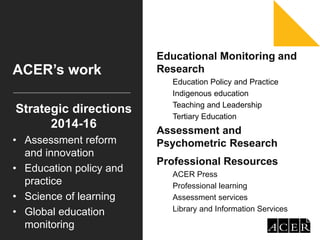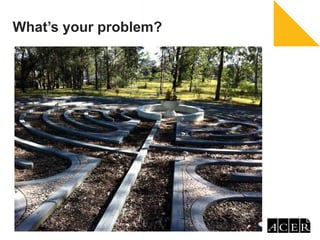This document discusses translating research into practice in education. It provides an overview of the Australian Council for Educational Research (ACER) which conducts educational research to improve learning. ACER works in various areas including assessment, indigenous education, and policy. The document emphasizes the importance of building education policies and practices on evidence rather than opinions. It defines evidence-based practice and discusses challenges in implementing research findings in classrooms. It also provides resources for educators to engage with research evidence and tools to evaluate research quality.
























